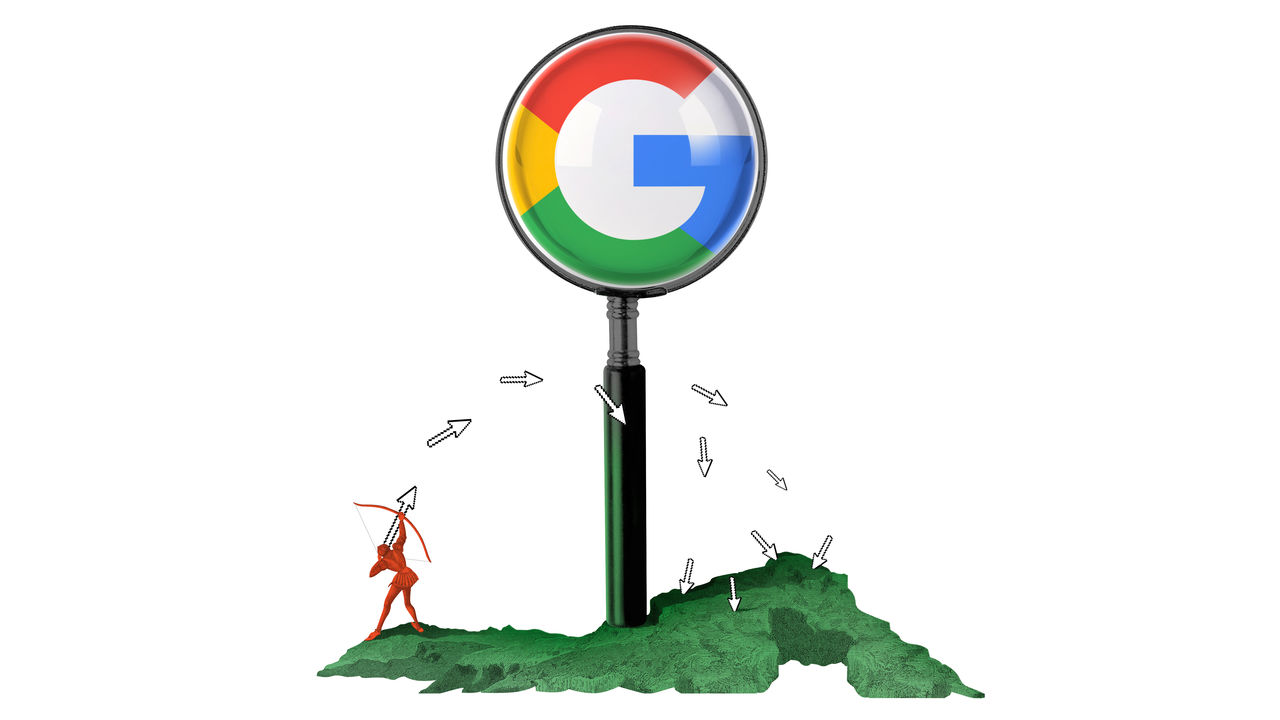
Your browser does not support the <audio> element.
When Aravind Srinivas was accepted at the University of California, Berkeley, to do a PhD, his mother was disappointed. Like many Indian parents, she wanted him to go to the Massachusetts Institute of Technology. But things worked out after all; on the west coast he interned at OpenAI and Google’s DeepMind, both of which became leaders in generative artificial intelligence (AI). With that experience, he co-founded Perplexity, a generative-AI startup recently valued at $1bn that provides fast, Wikipedia-like responses to search queries. He is an unassuming interviewee, but an ambitious one. His “answer engine” is aimed at competing with Google search, one of the best business models of all time. Think Martin Luther taking on the Catholic church.
Mr Srinivas is a student of disruption. When a podcaster asked him recently to compare the cultures of OpenAI and DeepMind, he explained how the engineer-led, free-wheeling approach of the former disrupted what he called the research-obsessed “very British” hierarchy of the latter (which was founded in London). He resorts to disruption theory when discussing Alphabet, Google’s parent company. Rather than explaining how Perplexity’s business model will enable it to attack the search giant, he uses a celebrated concept outlined in “The Innovator’s Dilemma”, a management bestseller from 1997 by Clayton Christensen, to identify what he sees as Alphabet’s Achilles heel. He is not alone. The innovator’s dilemma has been invoked to explain why Google is threatened by OpenAI’s ChatGPT and by other generative-AI sites such as You.com. The argument is seductive. But it is off the mark.
The dilemma, as presented by Christensen, explains why new technologies cause great companies to fail. If they compete with upstarts, they jeopardise their own standards and brand. If they don’t, they risk falling victim to the next wave of innovation. In a nutshell, the theory states that an incumbent is so good at pleasing its best customers that it would never dream of going downmarket. That gives insurgents an opportunity. They target a niche of the market with initially subpar products. Through relentless improvement, eventually they hit the big time. You can use it to understand how digital photography killed Kodak, and why Apple’s iPhone disrupted not mobile phones, but laptops.
Mr Srinivas brings up the theory to explain why Google’s search business could turn from a blessing to a curse. It costs Google almost nothing when users click on its links. But advertisers bid on the cost per click, providing Alphabet with whopping profit margins. Generative AI shifts the model. First, the results cost more, because AI-related Q&A uses more computing power than search queries. Second, they provide answers, not links, hence less granularity for advertisers. In short, if Alphabet were to abandon search for a Perplexity-like product, Mr Srinivas argues, costs would rise, revenues would plummet, margins would suffer and investors would head for the hills. That is where Perplexity, with no profits to jeopardise, sees something to aim at.
This is plausible in theory, but it is not an application of the innovator’s dilemma. In Christensen’s formulation, the incumbents overlook the insurgents because these start by nibbling at the fringes of a market, not by going head to head. Yet Mr Srinivas has openly thrown down the gauntlet to Google. Upstarts are supposed to win over underserved customers with cheap, scrappy technology. Yet Perplexity, with a subscription model that may eventually include ads, can be more expensive than Google and its answers tend to be far more polished (if not always accurate).
Rather than being a disrupter, Perplexity looks more like an example of what Christensen called “sustaining” innovation—making good products better. There is nothing wrong with that. But it is a game that Alphabet can play, too. It has the researchers and deep pockets to keep improving generative-AI search. It is experimenting with an AI tool called “search generative experience”, and says the computing costs of such queries have fallen by 80% since they were first introduced. It is confident it will be able to use AI to better monetise ads. Meanwhile its search revenues continue to boom; they rose by 14% year on year in the first quarter. Not exactly the start of the Reformation.
In short, Google does not appear to face a dilemma at present. It can compete or not, depending on where its interests lie. Mr Srinivas does a better job explaining Perplexity’s strengths. By gleaning answers from a variety of large language models, both closed and open-source, his product can take advantage of each model’s analytical strengths, as well as their varying pricing structures, to improve performance and lower costs. It is likely to become increasingly conversational. It is not hard to imagine it pairing up with a killer device—think of the earpiece in the movie “Her”, an AI love story.
The winner’s curse
What such a device could be, Mr Srinivas says, is the trillion-dollar question. But he reckons there is a huge hurdle in the shape of Apple’s iPhone. “This is the moat,” he says, picking up your columnist’s device. That is because of the interplay between the hardware and Apple’s operating system, app store and payments platform, which he thinks makes it almost invincible.
Again he may be wrong. Apple may be more exposed to the innovator’s dilemma than Alphabet. It is one of the world’s most reputable companies. It is laser-focused on its best customers (those, say, who can afford a $3,499 augmented-reality headset). It would never risk its brand by offering a cheap, shoddy product. Makers of AI gizmos, from pendants to whatever the Rabbit R1 thinks it is, one day hope to vanquish the mighty iPhone but remain far too flawed for Apple to bother responding to. Sounds like a recipe for disruption. ■
If you want to write directly to Schumpeter, email him at [email protected]
To stay on top of the biggest stories in business and technology, sign up to the Bottom Line, our weekly subscriber-only newsletter.



















